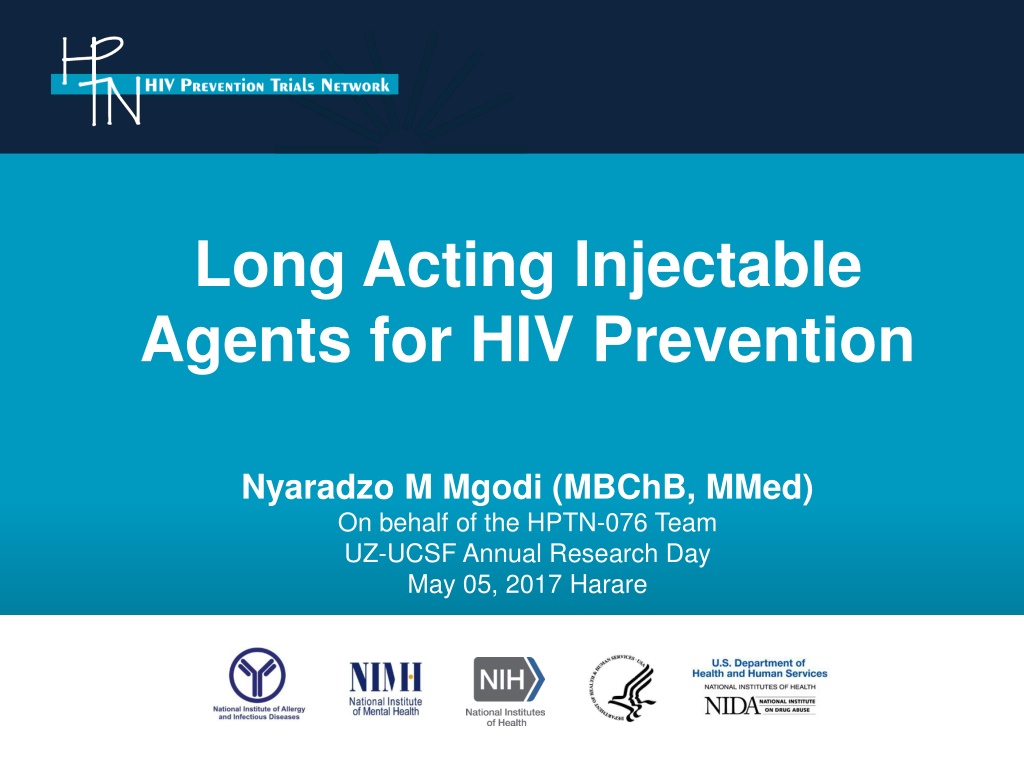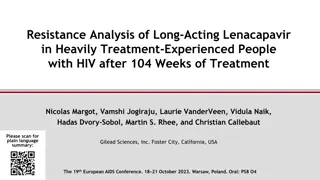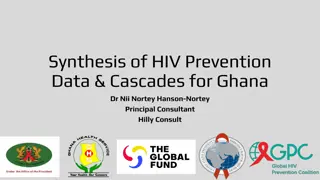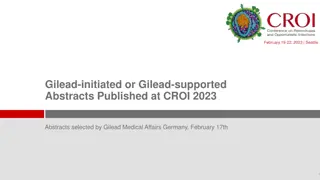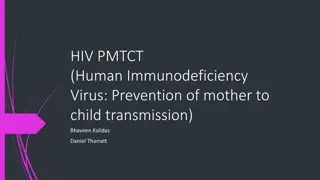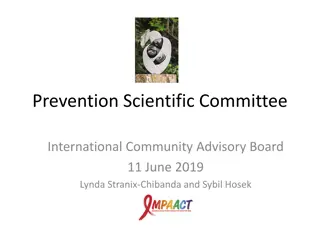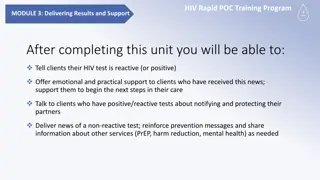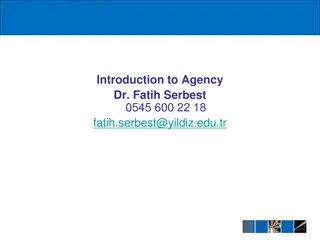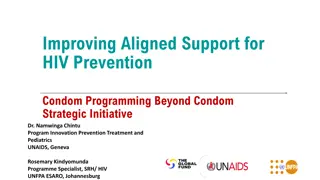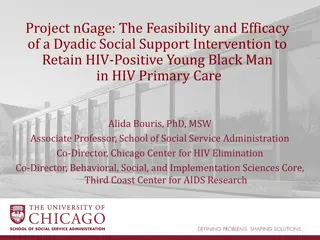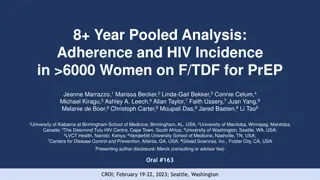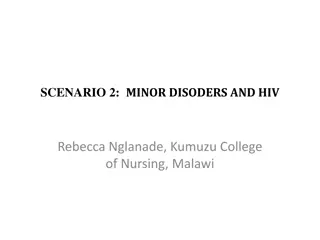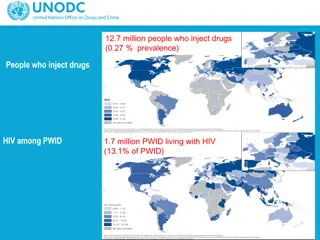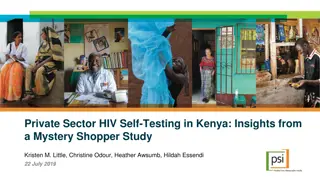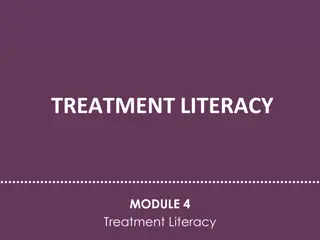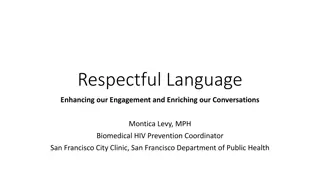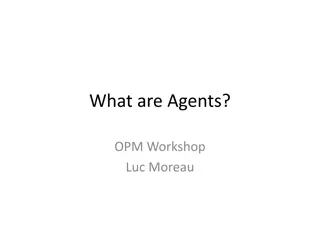Long-Acting Injectable Agents for HIV Prevention Research Overview
Background on the challenges of daily oral PrEP for HIV prevention and the potential of long-acting injectable agents like Rilpivirine (TMC278) in providing an alternative solution. The HPTN-076 study investigates the safety and acceptability of TMC278.LA for HIV pre-exposure prophylaxis. Key questions address the acceptability and safety of injectable agents for diverse populations. Study sites include locations in the US and internationally.
Download Presentation

Please find below an Image/Link to download the presentation.
The content on the website is provided AS IS for your information and personal use only. It may not be sold, licensed, or shared on other websites without obtaining consent from the author. Download presentation by click this link. If you encounter any issues during the download, it is possible that the publisher has removed the file from their server.
E N D
Presentation Transcript
Long Acting Injectable Agents for HIV Prevention Nyaradzo M Mgodi (MBChB, MMed) On behalf of the HPTN-076 Team UZ-UCSF Annual Research Day May 05, 2017 Harare
Outline Background Introduction to Rilpivirine (TMC 278) HPTN-076 Study Design Methods Results Conclusions http://a57.foxnews.com/global.fncstatic.com/static/managed/img/fn2/video/660/371/needle640.jpg?ve=1tl=1
Background Daily oral tenofovir/emtricitabine is protective against HIV infection when used for pre-exposure prophylaxis (PrEP). Adherence to daily oral PrEP is difficult for many Long-term maintenance of such dosing is a challenge Oral PrEP is one option May not be suitable for everyone Finding alternative PrEP strategies is a priority. Urgent need to develop PrEP agents that have more convenient dosing schedules, such as: Long acting (LA) injectable agents
Background LA injectable agent precedence Anti-psychotics Contraception Antibiotics Analgesia LA injectable agents for HIV prevention Obviate the need for daily pill taking, Raise novel challenges regarding adherence, safety, and optimizing starting and stopping mechanisms. Chemical entities in advanced stages of clinical development for LA prophylactic use include Rilpivirine (RPV)
Rilpivirine (TMC278) Favorable attributes for PrEP: Generally safe and well tolerated High concentrations found in genital tract Novel parenteral nanosuspension formulation (TMC278 LA) allows 8 weekly dosing Well-suited for delivery via IM injection NNRTI http://a57.foxnews.com/global.fncstatic.com/static/managed/img/fn2/video/660/371/needle640.jpg?ve=1tl=1
Questions Is the use of injections for HIV prevention acceptable in diverse populations? Are long-acting injectable PrEP agents safe?
HPTN 076 Phase II Safety and Acceptability of an Investigational Injectable Agent, TMC278 LA, for HIV Pre-Exposure Prophylaxis
Study Sites SpilhausTeam US Sites Newark, NJ Bronx, NY International Sites Cape Town, South Africa Harare, Zimbabwe
Methods HPTN 076 is a phase 2, double-blind, 2:1 randomized trial comparing the safety of 1200mg TMC278 LA to placebo Injectable product was administered to low risk, sexually active HIV-uninfected women Injectable product was administered in two gluteal, IM injections on 6 occasions, 8 weeks apart at study Weeks 4, 12, 20, 28, 36, and 44 during the Injection Phase. All study participants are followed to Week 76, 32 weeks after the last injection visit, the Tail Phase.
Methods Prior to injections, participants received either placebo or 25mg rilpivirine (RPV) for 28 days. Participants were observed taking the oral product up to six times in clinic. The remaining oral doses were self-administered during study Weeks 0 4 (Oral Run-in Phase). Acceptability, safety and pharmacokinetic data were collected throughout the study. Product was paused for any participant with grade >2 related or grade >3 unrelated adverse events (AEs).
HPTN 076 Study Design HIV-uninfected, ages 18-45 136 WEEKS ORAL RUN-IN INJECTION PHASE 4 52 76 Six doses of injections of TMC278 LA every 8 weeks Six doses of injections of TMC278 LA placebo every 8 weeks ARM 1 N = 91 Daily Oral TMC278 Follow-up phase (Tail phase) ARM 2 N = 45 Daily oral placebo Primary objective: Evaluate the safety of TMC278 LA, through 48 weeks after initial injection in women in sub-Saharan Africa and the U.S.
Methods Participants presenting with Grade 2 or greater RELATED Adverse Events (AEs) during the oral run-in phase did not progress to the Injection Phase. On a case-by-case basis, participants with Grade 3 or 4 UNRELATED AEs were permitted to move into the Injection Phase. The Fisher Exact test was used to compare the number of AEs between the two arms. Boxplots were used to summarize the distribution of plasma RPV concentration at each visit.
Methods Drug concentrations were determined via a validated liquid chromatographic-tandem mass spectrometric (LC-MS/MS) method Participants identified one or more attributes of injectable prevention they liked and disliked at baseline. Participants interest in future injectable PrEP use was measured at Week 44 by level of agreement with six items. Comparisons by arm were made between participants who agreed a lot to each statement.
Major Milestones March, 2015 All sites activated Timeline for Major Milestones September, 2015 Enrollment completed http://a57.foxnews.com/global.fncstatic.com/static/managed/img/fn2/video/660/371/needle640.jpg?ve=1tl=1 September, 2016 Primary Endpoint February, 2017 Last study visits
Results A total of 136 (100 African, 36 US) women were enrolled. During the Oral Run-in Phase, ten women withdrew (8 active arm, 2 placebo arm) and four had product discontinued (3 active arm, 1 placebo arm). During the Injection Phase, 1 withdrawal and 16 product discontinuations (10 active arm, 6 placebo arm). 6 (8%) active arm and 2 (5%) placebo arm were due to AEs
Participant Characteristics Overall (N=136) African Sites (N= 100) US Sites (N=36) Median Age 31 years (IQR: 25,38) 31 years (IQR: 22,37) 32 years (IQR: 28,40) Median Weight 75 kg 72 kg 83 kg (IQR: 64,89) (IQR: 63,87) (IQR: 72,100) Marital Status 46% married 56% married 19% married Race 94% Black 100% 78% Employment Status 60% unemployed 65% unemployed 47% unemployed
Injection Phase: Safety Data A total of 122 (80 active arm, 42 placebo arm) women received > one injection; 98 participants (64 active arm and 34 placebo arm) received all six injections. Transient grade >2 liver abnormalities occurred in 9 (11%) of active arm participants compared with 4 (10%) in the placebo arm. Three active arm participants developed grade >3 injection site reactions compared with none in the placebo arm. The differences in AEs observed between the two arms were not statistically significant.
Injection Phase: Drug Concentration Active Arm Participants Receiving at Least One Injection (N=80)
Injection Phase: Drug Concentration In participants receiving at least one injection: The median trough concentration (CTrough) of RPV during the injection phase was 68.2 ng/mL. The concentration two weeks (C2WK) after the first and second injections (at Weeks 6 and 14) was 85.5 ng/mL and 113 ng/mL, respectively. At Week 52 (eight weeks after last injection), the CTrough was 91.9 ng/mL.
Injection Phase: Drug Concentration Participants receiving all six injections (N=64) < 2% had RPV concentrations below the PA-IC90 at any given time point after Week 4 when injections began.
Acceptability Data The majority of participants liked that the injectable was: Easier to use (>80%) Provided longer-term protection (>73%) Some participants disliked that the injectable was: Painful (~30%) Had side effects (31-37%) Acceptability did not differ by arm. At the last injection visit 61% of women strongly agreed that they would definitely use and 73% that they would think about using a PrEP injectable in the future. At the last injection visit, only 3% of participants strongly agreed that they would NOT use an injectable PrEP agent if it were available. Participants reported strongest interest in future use of an injectable that prevented both HIV and pregnancy.
Acceptability Data Attributes LIKED 100 90 80 70 60 50 40 30 20 10 0 Nothing HIV prevention Easier to Use Longer-term protection Discreet Provided by HCP Sex not interrupted Other Placebo TMC 278 LA
Acceptability Data Attributes DISLIKED 100 90 80 70 60 50 40 30 20 10 0 Nothing No HIV prevention Painful Side Effects No Reversal Not discreet Provided by HCP Cost Other Placebo TMC 278 LA
Acceptability Data At the last injection visit, 73% of women strongly agreed that they would think about using and 61% that they would definitely use a PrEP injectable in the future.
Questions Is the use of injections for HIV prevention acceptable in diverse populations? Are long-acting injectable PrEP agents safe?
Conclusions And it all comes together TMC278 LA IM injections administered every eight weeks in this clinical trial cohort of African and US women were safe, overall well tolerated and acceptable. Data from this study support further development of injectable agents for PrEP. http://a57.foxnews.com/global.fncstatic.com/static/managed/img/fn2/video/660/371/needle640.jpg?ve=1tl=1
Congratulations! 988 scheduled visits 100% retention rate Spilhaus representatives receiving retention award HPTN Annual Meeting, April 2017, Washington DC
Thank you! We sincerely thank the 136 participants, especially the 52 women from Zimbabwe, and their families/communities CAB Study site staff Protocol Leadership And all of you for your invaluable support 076 Festivities
Acknowledgements The HIV Prevention Trials Network is sponsored by the U.S. National Institute of Allergy and Infectious Diseases, the U.S. National Institute of Mental Health, and the U.S. National Institute on Drug Abuse, all components of the U.S. National Institutes of Health.
